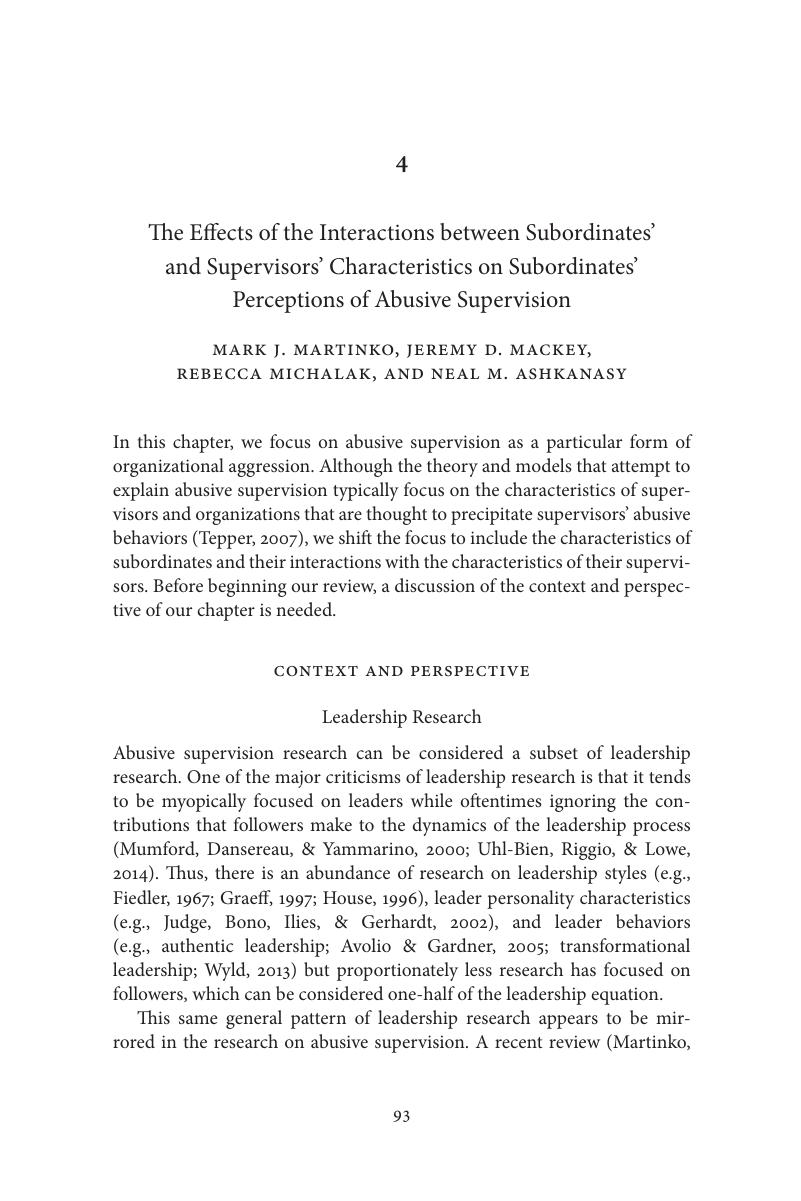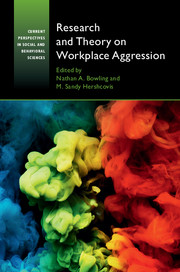Book contents
- Research and Theory on Workplace Aggression
- Research and Theory on Workplace Aggression
- Copyright page
- Dedication
- Contents
- Tables and figures
- Contributors
- Acknowledgments
- Introduction
- Part I The Measurement, Predictors, and Consequences of Workplace Aggression
- Part II The Social Context of Workplace Aggression
- 4 The Effects of the Interactions between Subordinates’ and Supervisors’ Characteristics on Subordinates’ Perceptions of Abusive Supervision
- 5 From Victim Precipitation to Perpetrator Predation
- 6 Identity Matters
- 7 Third-Party Reactions to Workplace Aggression
- 8 Spillover and Crossover of Workplace Aggression
- 9 Invisible at Work
- 10 Cross-Cultural Differences in Workplace Aggression
- Part III The Prevention of Workplace Aggression
- Index
- References
4 - The Effects of the Interactions between Subordinates’ and Supervisors’ Characteristics on Subordinates’ Perceptions of Abusive Supervision
from Part II - The Social Context of Workplace Aggression
Published online by Cambridge University Press: 16 March 2017
- Research and Theory on Workplace Aggression
- Research and Theory on Workplace Aggression
- Copyright page
- Dedication
- Contents
- Tables and figures
- Contributors
- Acknowledgments
- Introduction
- Part I The Measurement, Predictors, and Consequences of Workplace Aggression
- Part II The Social Context of Workplace Aggression
- 4 The Effects of the Interactions between Subordinates’ and Supervisors’ Characteristics on Subordinates’ Perceptions of Abusive Supervision
- 5 From Victim Precipitation to Perpetrator Predation
- 6 Identity Matters
- 7 Third-Party Reactions to Workplace Aggression
- 8 Spillover and Crossover of Workplace Aggression
- 9 Invisible at Work
- 10 Cross-Cultural Differences in Workplace Aggression
- Part III The Prevention of Workplace Aggression
- Index
- References
Summary

- Type
- Chapter
- Information
- Research and Theory on Workplace Aggression , pp. 93 - 120Publisher: Cambridge University PressPrint publication year: 2017
References
- 6
- Cited by

